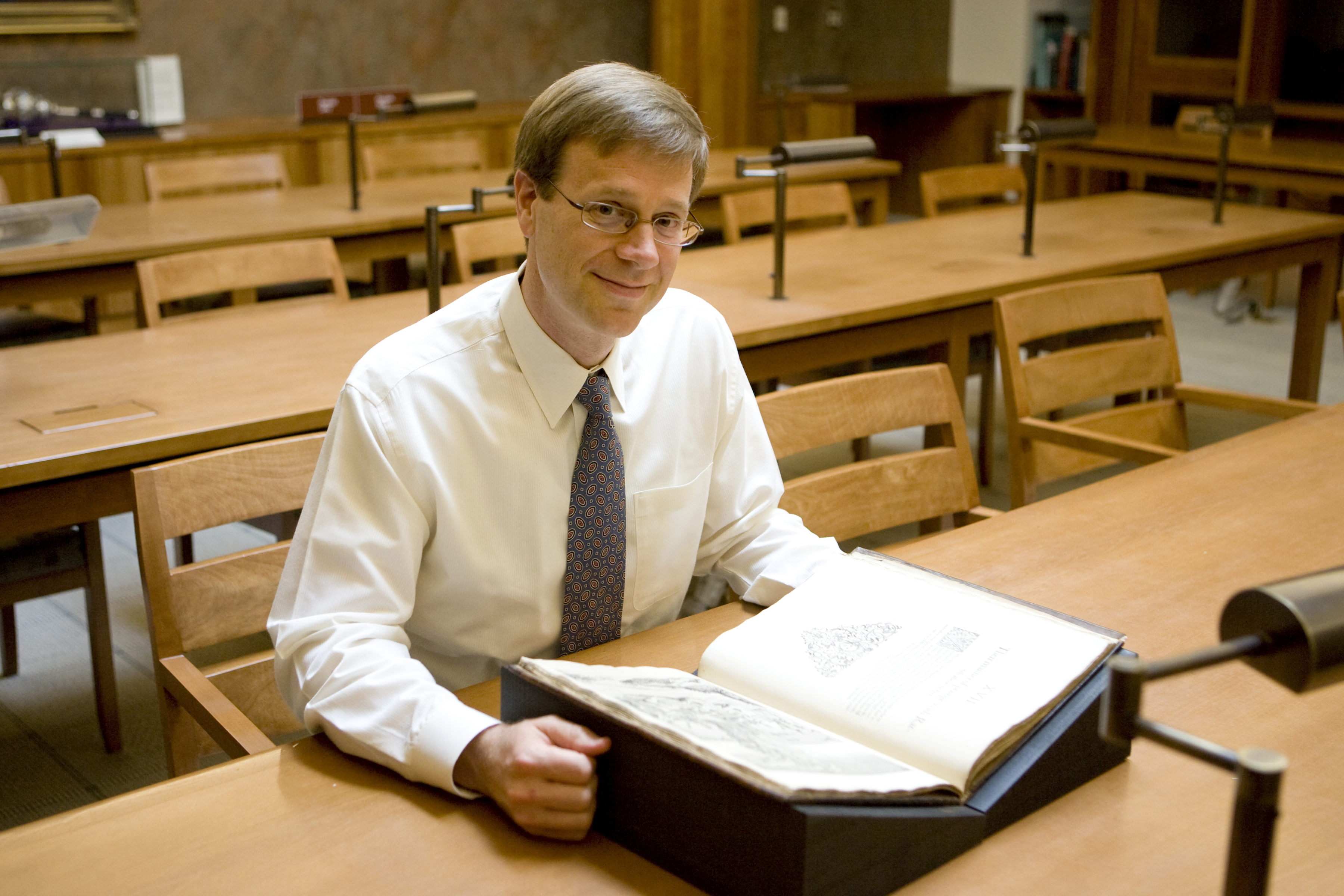March 23, 2011 — Michael F. Suarez, director of the University of Virginia's Rare Book School, says he agrees with the Google defense that the process of digitizing books transforms them into something else.
Google was sued several years ago for copyright violations when it undertook a project to create an online digital library. On Tuesday, a federal judge rejected a settlement that would have allowed the project to proceed.
For Suarez, an online book – that "something else" – is a digital surrogate or simulacrum and not really a book at all.
He reminded a recent Virginia Festival of the Book audience gathered in the auditorium of the Mary and David Harrison Institute for American History, Literature, and Culture/Albert and Shirley Small Special Collections Library that to simulate means "to feign or pretend to have something one does not possess," and a simulacrum is "a representation of what is absent."
Suarez, a Jesuit priest and University Professor who teaches 18th-century poetry in the College of Arts & Sciences, talked March 16 about "The Future of the Book in the Digital Age." He acknowledged that the digital environment is here to stay, but said he is concerned about what is lost when people use online books, especially for academic study, instead of the physical objects.
He maintained that he is not against digitization altogether. Suarez, co-editor of "The Oxford Companion to the Book," a two-volume set about book history, also is editor-in-chief of the largest digital humanities project in the world. Oxford Scholarly Editions Online has started digitizing 700 to 900 editions, Suarez said, with some of them having 10, 20 or 30 volumes each. It is scheduled to go live next year with the first batch of online texts.
"If we're going to use the digital environment, we have to understand that it is one of loss and gain," said Suarez, who is also honorary curator of the U.Va. Library's special collections.
Art history offers an example of this type of loss, since the discipline has used projected slides of artwork for decades. Suarez showed a slide of a painting from 1804 and then another slide of the same painting and then several more versions. The colors and clarity varied among the versions, even though they depicted the same thing. He also mentioned the painting's large size, which isn't represented on the screen.
"What do we lose when we use pictures instead of the artifacts themselves?" he asked the audience. It changes the way something is seen and interpreted, even allowing for the distortions, he said.
Companies and universities have already digitized old books published before copyright laws took effect. The publishers claim their digital books are exactly like the originals, but Suarez showed that is obviously not true.
ProQuest's Early English Books Online says it presents "images that show the works exactly as they appeared in their original printed editions." A proclamation from Queen Elizabeth I, however, is dated 2596 when it was published 1,000 years earlier, because of the imperfect scanning process.
"How can we explain this, except to say Elizabeth was writing science fiction? How would you know what you're getting is defective or inaccurate or incomplete without knowing the importance of the physical artifact?" he asked. The scholar should command the tools; the tools shouldn't predetermine the outcome for the scholar, Suarez said.
The book as a physical object holds more than the words within, he argued. It has social codes that display what kind of book it is, for example. A red, leather-bound book with "Veritas" embossed on its spine is made to appeal to a different kind of reader than a paperback that depicts an AK-47 or a romantic couple.
The way a book is made contains historical evidence that is lost in the digital format. For book historians, each book also holds bibliographical codes and clues. Handmade books are each unique in ways that can't be reproduced online.
"A book is always a communal object, a coalescence of human intentions," Suarez said. "If you know enough, every book is alive with the judgments of its makers."
He said professors are finding that students prefer using digital books and don't make the connection between them and the real books.
Another function, keyword searching, is useful, Suarez said, but only if you already know something about the book. "How do you know what keywords to use?"
If we can admit that digital reproductions of books are different from printed books, that will help students and scholars understand the differences as they use new digital tools, he said, and might just keep alive the history of books.
Rare Book School provides continuing-education opportunities for students from all disciplines and levels to study the history of written, printed and born-digital materials with leading scholars and professionals in the field. Founded in 1983, the school moved to its present home at the University of Virginia in 1992. Weeklong, intensive courses are offered in the summer at U.Va. and during the year at various locations, including New York City, Washington, D.C. and Baltimore.
— By Anne Bromley
Media Contact
Article Information
March 23, 2011
/content/when-book-not-book

